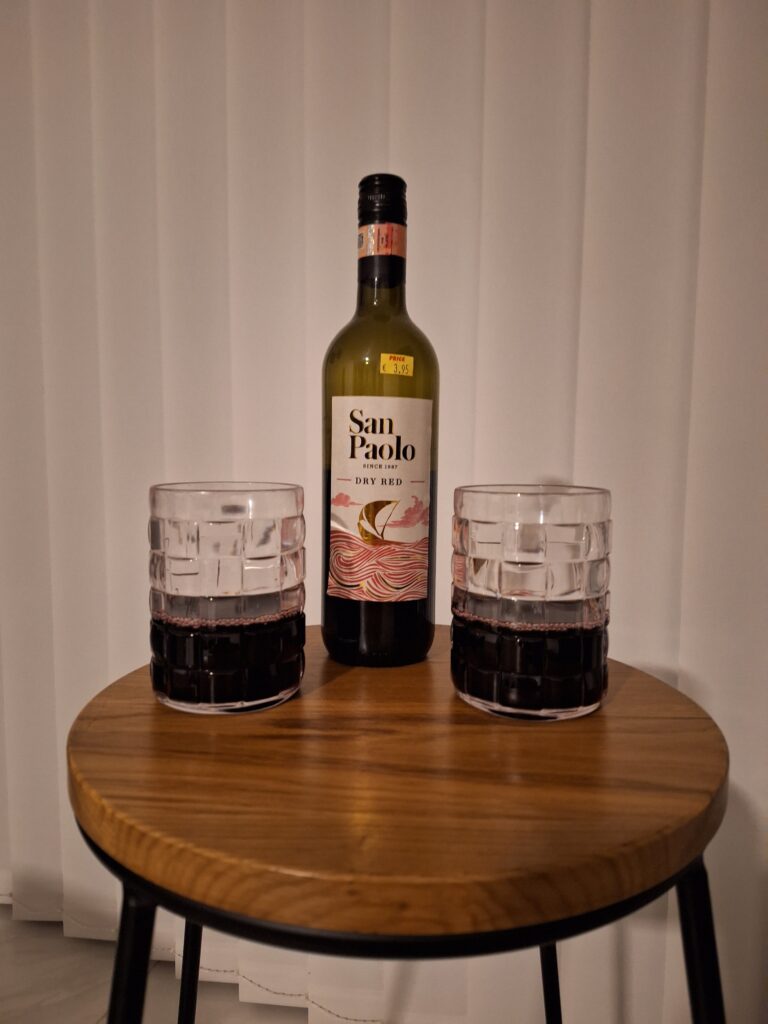The apostle Paul, born in 10 AD, was an eager persecutor of Christians as a young man. But on his way to Damascus to persecute there, he was blinded by a bright light, he heard the voice of Jesus and was converted. From the age of 35 he himself traveled around as a missionary for Christianity, and his letters form the basis of modern Christianity. After twelve years of evangelizing, he came to Jerusalem, where he caused so much trouble that he was imprisoned by the Romans. On his way to the trial in Rome AD 60, he survived a shipwreck off Malta, and this is something the Maltese people will never forget.
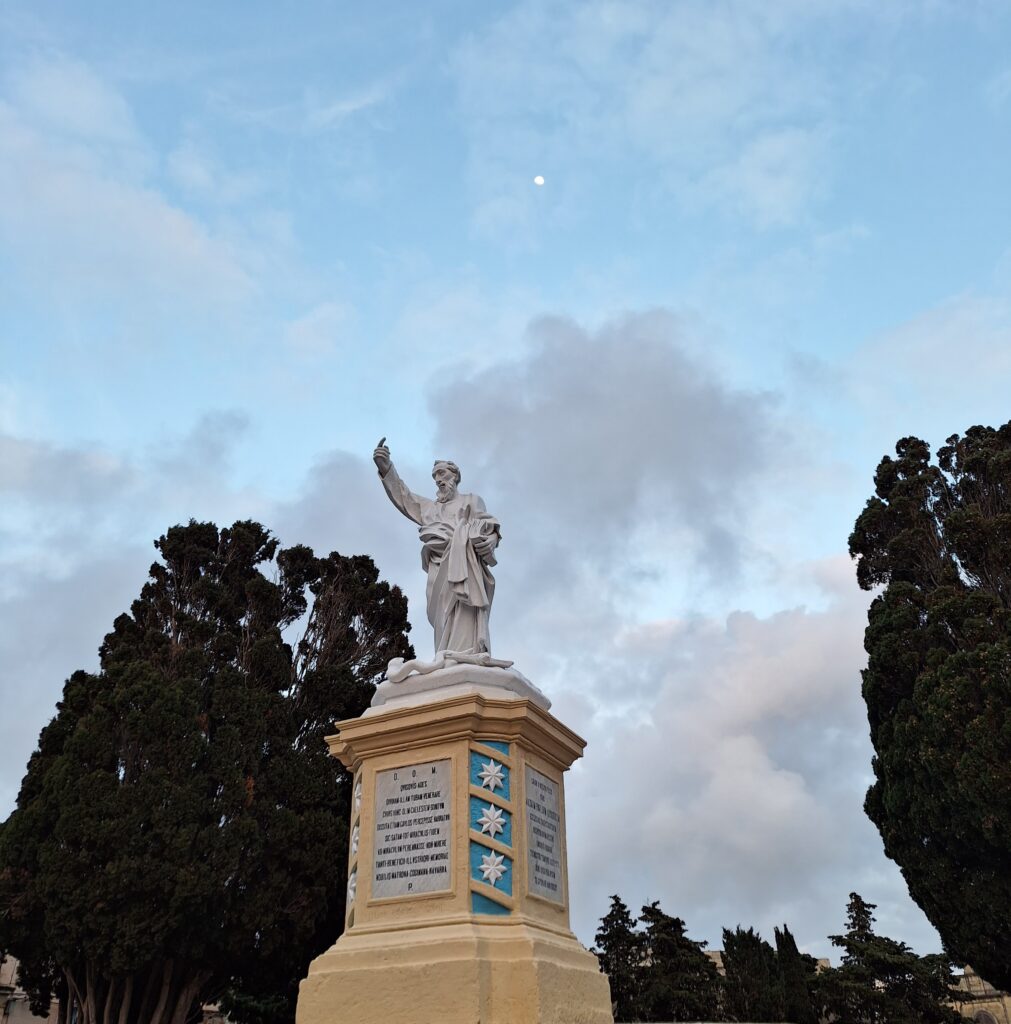
The shipwrecking is detailed in the Acts of the Apostles, chapter 27: ‘… And we being exceedingly tossed with a tempest, the next day they lightened the ship.‘
There are countless churches, streets and memorials in Malta dedicated to Saint Paul, including the church of San Pawl in Buġibba, where parts of the text have been cited in at least 10 different languages. The Maltese focus mostly on the description of the time after the shipwrecking; that they were well received in Malta (Acts 28). When they came ashore, the Maltese lit a fire for the castaways so they could warm themselves. A snake came out of the wood and bit Paul. When he was not harmed by the snakebite, he was considered a God, and the Maltese converted to Christianity. After this, there have never been snakes in Malta.
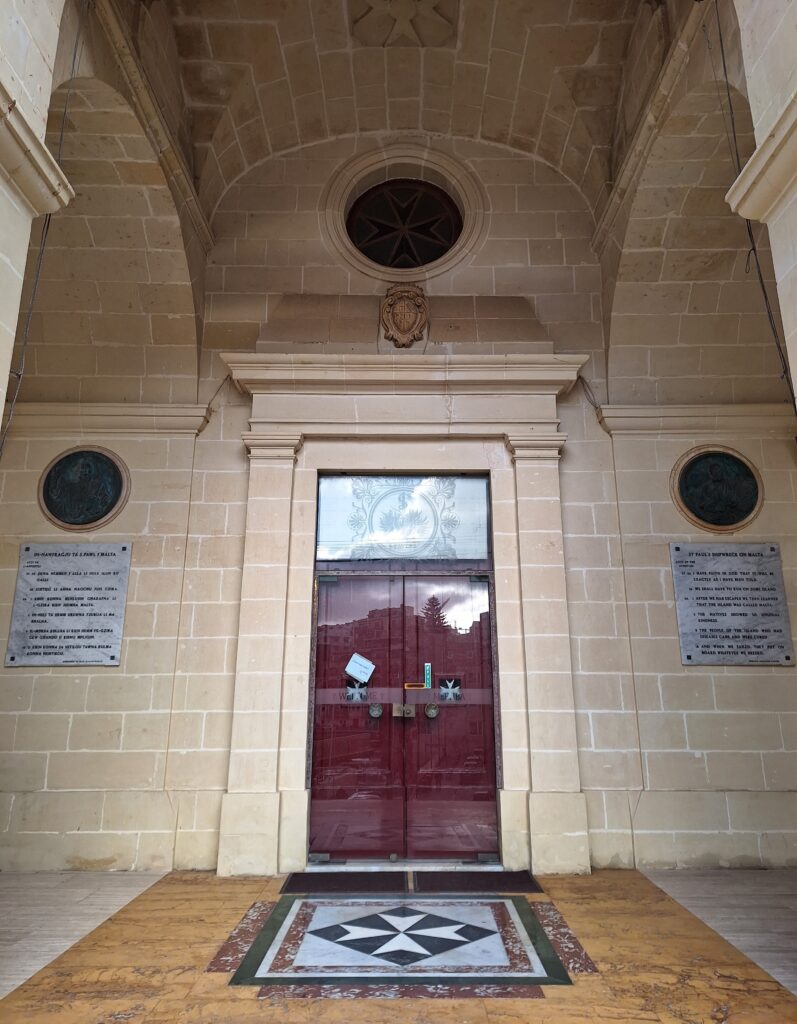
According to tradition, the shipwrecking occurred on the north-east coast of Malta island, at two more or less connected islands that are today called Saint Paul’s Islands. The entire area within is also named after the event: Saint Paul’s Bay.
‘And we were all in all in the ship two hundred threescore and sixteen souls. And when they had eaten enough, they lightened the ship, and cast out the wheat into the sea.‘ Acts 27.
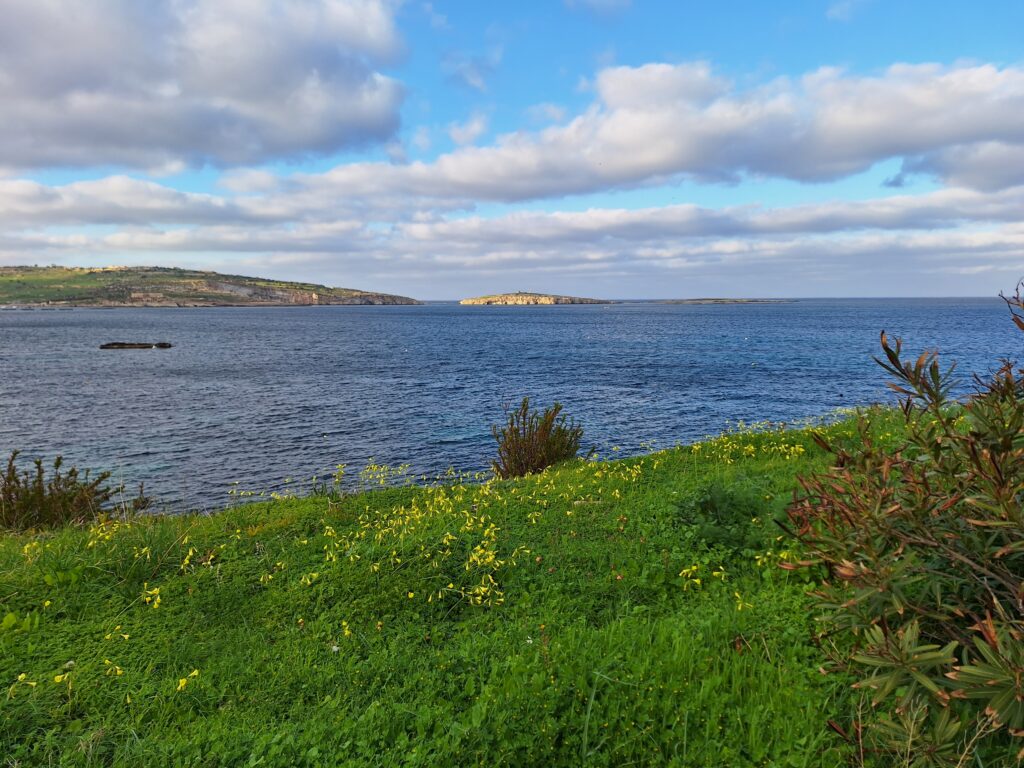
On the largest of the two islands, a statue of Paul was erected in 1844, signed Segismondo Dimech and Salvatore Dimech. The statue has been restored several times and blessed by Pope John Paul II in 1990. We wanted to swim there!
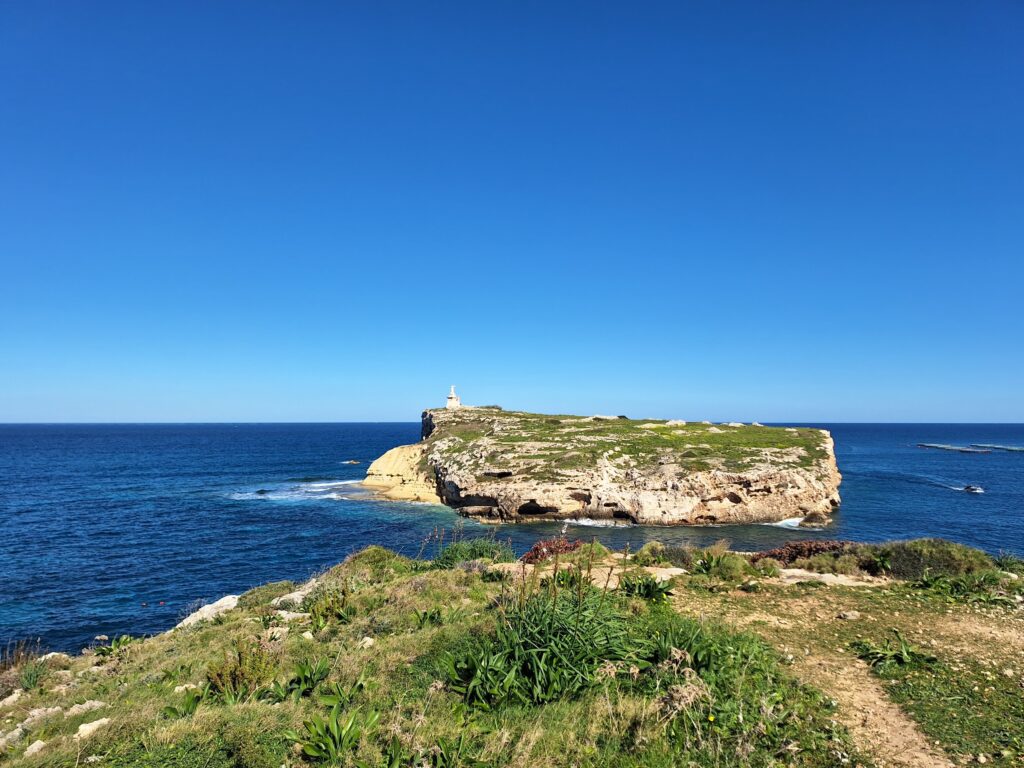
A swim across a strait a couple of hundred meters wide would be an easy match for Tobatheornottobathe, we thought in our exquisite optimism. And we prepared really well this time: mask, snorkel, flippers, diving buoy and even a small inflatable boat to carry our clothes (the plan was to climb up to the statue once we got there). But then there was this thing called season. We traveled to Malta in February to get some sun and heat, but we were not quite aware that during the winter season, Malta is a windy place. There is a lot of boat traffic in the strait, and we didn’t want to take the risk of not being seen in rough water. So we had to wait a couple of weeks before the breeze eased and we could set off. But finally we were on the way, in flat and fine sea.
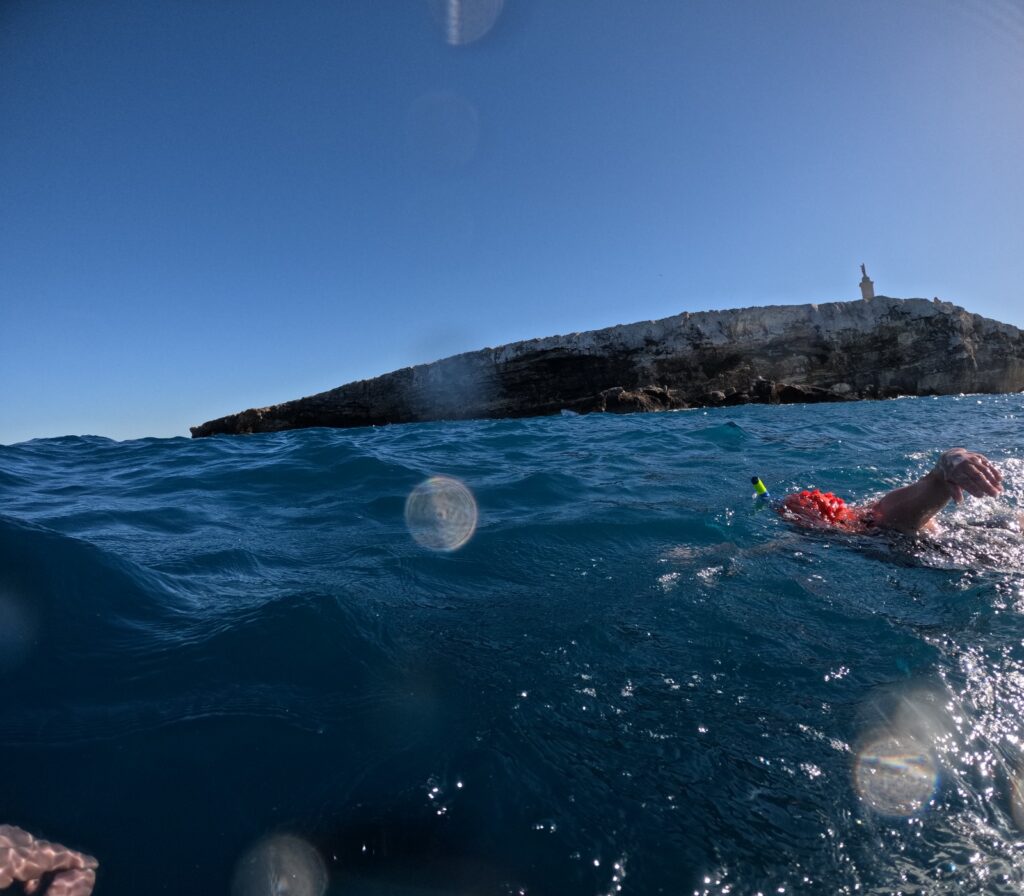
The decision to swim on the outside of the islands was not a good idea! (We wanted to avoid the fish farming ‘cages’ on the inside) Comment from Knut before we came out of the wind shelter from Comino and Gozo: ‘Oh so wonderful, it feels like flying!‘ Answer from Idun after the sea got rougher: ‘It feels like swimming in a washing machine! I might be sick!‘
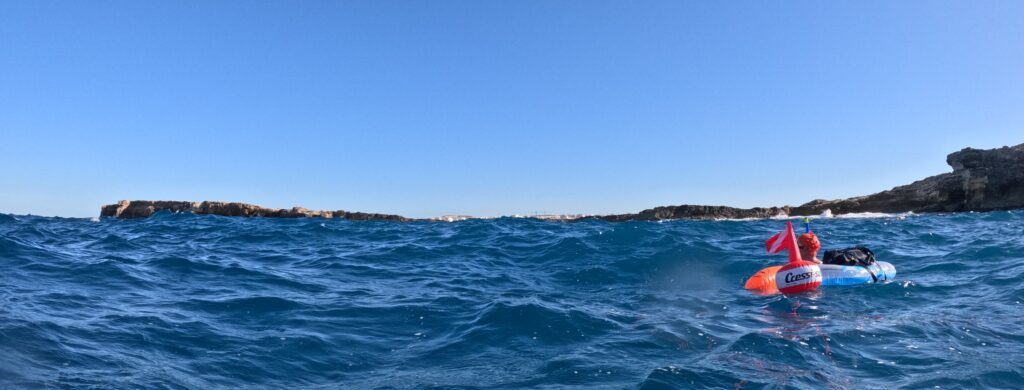
The landing after they hit land is described as follows in Acts 27: ‘And when it was day, they knew not the land: but they discovered a certain creek with a shore, into the which they were minded, if it were possible, to thrust in the ship. And when they had taken up the anchors, they committed themselves unto the sea, and loosed the rudder bands, and hoised up the mainsail to the wind, and made toward shore. And falling into a place where two seas met, they ran the ship aground; and the forepart stuck fast, and remained unmoveable, but the hinder part was broken with the violence of the waves. And the soldiers’ counsel was to kill the prisoners, lest any of them should swim out, and escape. But the centurion, willing to save Paul, kept them from their purpose; and commanded that they which could swim should cast themselves first into the sea, and get to land: And the rest, some on boards, and some on broken pieces of the ship. And so it came to pass, that they escaped all safe to land.‘
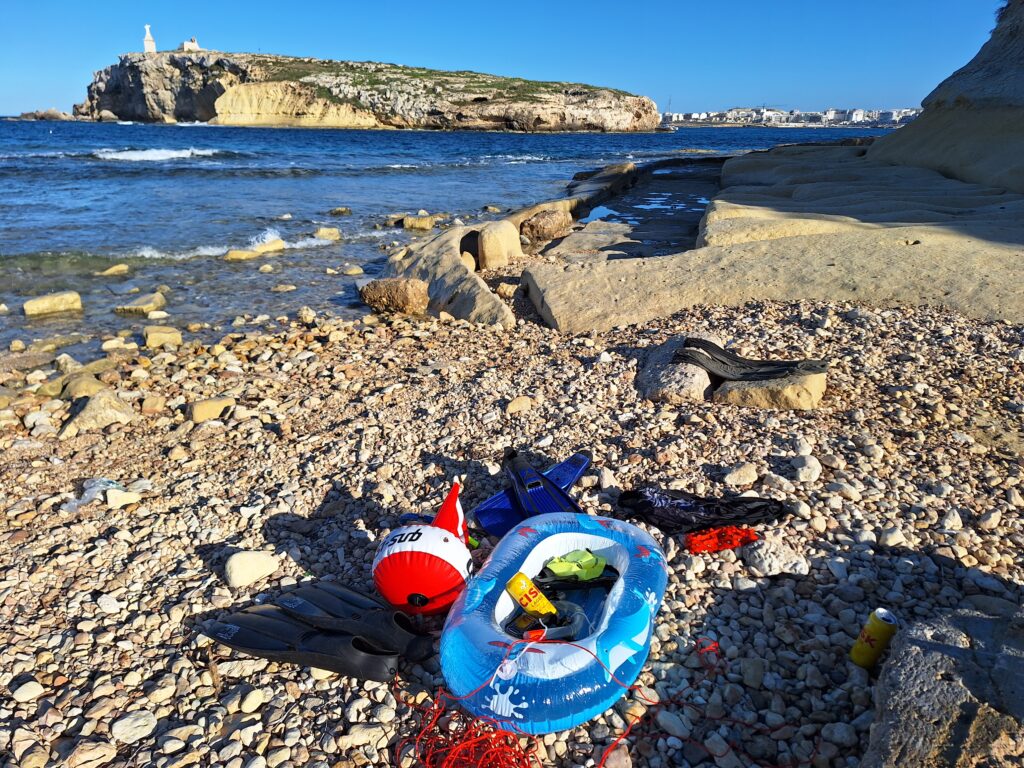
Tobatheornottobathe did not land on Saint Paul’s Island. We would probably have made it, but it would have been a bloody affair. And the conclusion? The shipwrecking probably never happened in Saint Paul’s Bay. But we have read that there is a place further south on Malta called Munxar, by Saint Thomas’ Bay. This beach has a reef outside, where ships can easily sink. To be continued – maybe…
